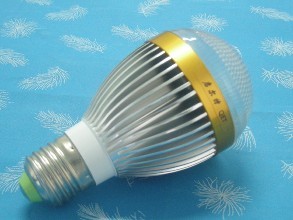Cell phone:13600151511 (Manager Gao)
Cell phone:15813720327(Director Chen)
Phone:+86 0755 29832951
Office Address:East of 201, No. 20-5, Jixiang 1st Road, Pingxi Community, Pingdi Street, Longgang District, Shenzhen
Factory Address:No.2,Fudong 4th Road,Dong'ao Village,Shatian Town,Huiyang District,Huizhou City,Guangdong Province,China
At present, the LED industry, in the production of LED lighting light sources and lamps, the development of more mature mainly for the traditional metal aluminum or ceramic material heat sink system (heat sink), the initial thermal conductivity of these two materials excellent. However, the metal aluminum molding process cycle is long, and the material itself conductive and other factors, is not conducive to the diversification of lighting product design, but also increases the cost of design to meet the safety requirements. Although the ceramic material is insulating, the large specific gravity, high molding difficulty, and batch production is not easy to achieve also increases the cost of its use, bringing limitations to a wide range of applications. The thermal conductive silicone film heat dissipation solution provides a new idea and solution for the production of LED lighting products due to its flexible design, insulation, light weight, and good thermal conductivity, and has recently gained the attention of enterprises in the design and production of lamps and lanterns, and is gaining rapid development.

The design of the aluminum substrate has solved the problem of connecting from the LED to the circuit with the aluminum plate as the substrate, which can transfer the heat to the aluminum plate, but unfortunately, this aluminum plate is often not yet the final heat sink, usually have to connect this aluminum plate to the real heat sink. The easiest way to do this is to use rivets or screws to connect to the heat sink. However, this method often creates an air gap, and a small air gap produces a thermal resistance that is tens of times greater than the other thermal resistance. Because the thermal conductivity of air is 0.023W/m-k. So it must be coated with a thermally conductive adhesive to fill the gap. General thermal conductive silica gel thermal conductivity of about 1-2W/m-k high thermal conductivity up to 6W/m-k. But the thermal conductive adhesive must be good fluidity, otherwise, due to uneven application will still produce air gaps, may be worse than not used. Another disadvantage of the thermal conductive adhesive is that its own adhesion is not enough to fix the aluminum substrate on the aluminum heat sink.
With the improvement of LED luminous efficiency and the reduction of heat generated, LED heat dissipation requirements will gradually reduce, thermal conductive silicone film will be able to meet the thermal conductivity needs of most conventional LEDs. It is expected to get more rapid development soon, and the industry chain division of labor will be further clarified.

- Website Home - About Us
- News - Product Show
- Honors and Qualifications - Production strength
- Case Studies - Online Message
- Contact Us
Contact Method:13600151511
Mailbox:gaowenjie@keshihua.com
Office Address:East of 201, No. 20-5, Jixiang 1st Road, Pingxi Community, Pingdi Street, Longgang District, Shenzhen
Factory Address:No.2 Fudong 4 Road, Dong'ao Village, Shatian Town, Huiyang District, Huizhou City, Guangdong Province

Follow us
